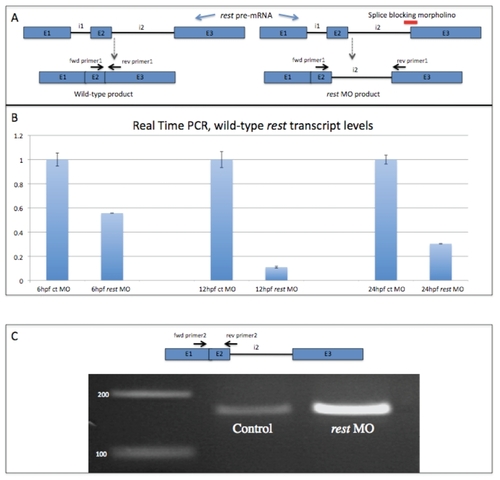Fig. S2
|
rest MO effectively reduces wild-type rest transcript levels. (A) Diagram of the rest premRNA showing the oligonucleotides and morpholino used for these experiments. rest splice blocking morpholino (MO) binds the intron 2-exon3 boundary of zebrafish rest and is predicted to result in the inclusion of intron 2. Primers (arrows) that amplify a 130 bp region spanning exon 2 and exon 3 in the wildtype mRNA are separated by 3,674 bp after morpholino treatment if intron 2 is not removed. This product is not amplified under the PCR conditions used. (B) Real Time PCR analysis of rest transcript levels at 6 hpf, 12 hpf and 24 hpf after micro-injection of control or rest mo. Wild-type rest mRNA is reduced following treatment with rest morpholino (C) RT-PCR of 24hpf control or rest morphant cDNA using primers designed to amplify a 173 bp mRNA product containing intron 2. The PCR product predicted to be produced as a result of the morpholino treatment is enriched in rest morphant cDNA. Note: a similar product is present at low levels in control and may represent a splice variant (Rest4) that is present in other species. |
Reprinted from Developmental Biology, 340(2), Gates, K.P., Mentzer, L., Karlstrom, R.O., and Sirotkin, H.I., The transcriptional repressor REST/NRSF modulates hedgehog signaling, 293-305, Copyright (2010) with permission from Elsevier. Full text @ Dev. Biol.

